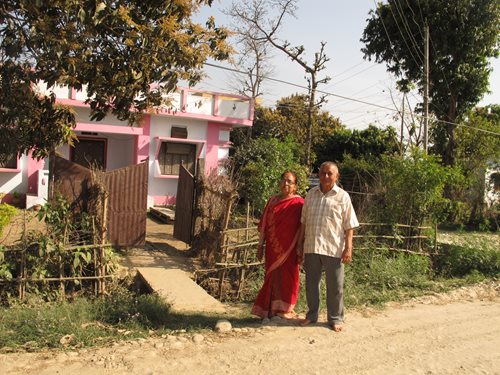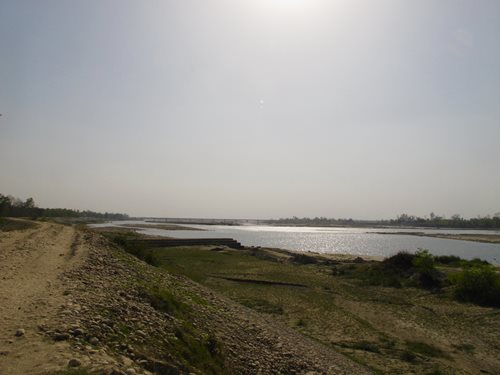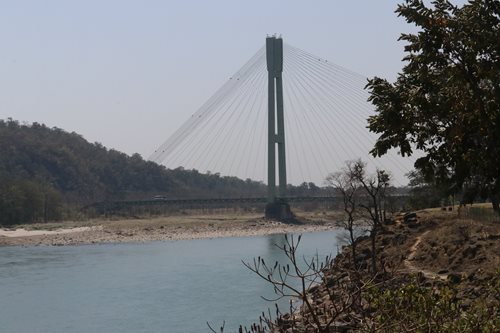We travelled back to Rajapur Island in western Nepal - to where we lived as a family when the boys were small. It seemed like the perfect place for children to grow up. Alex had a host of playmates and the community was tight and caring so if ever I went out to find him, a neighbour would always know where he was and with whom. The sun was always shining (except during the Monsoon) and, being an alluvial island, there were sandbanks to romp in, goat kids to pet and plenty of trees to climb. We paused last week outside the house we had rented and a neighbour – carrying an enormous load of fodder slung from a headband – approached and asked after the boys. She pressed us to go in and greet the couple who had rented their house to us. As we were being typically hesitantly British wondering if we should, the maths teacher came out and beckoned us inside.
He showed us into ‘our’ lounge (that’s how he described it) and bade us sit while he called his wife. We exchanged photos of our children and both gasped at how they had grown. Their son was in London. The now quite aged Brahmin couple didn’t know what he was doing there but he kept in touch.
The conversation wandered on to our firstborn’s antics. The couple spoke of how our child-rearing style was so different to the way Nepalis raise their children. Their facial expressions said we were shockingly different.
They talked of how I let Alexander browse on the delicious mulberries that grew in our garden, not even supervising what he ate, not worrying that he might eat the wrong thing, not accepting that he might be competent to identify what he was eating, nor accepting that his local friends might guide him. I was apparently taking unacceptable risks. Alexander spent a lot of time with Tharu neighbours and I had the impression that the Brahmins didn’t think the Tharus were especially trustworthy. Perhaps they felt that the Tharu kids themselves might not know what was and wasn’t safe to eat.
The couple also described an incident I either didn’t know about or had forgotten. A neighbour’s cow was giving birth and a local friend told Alexander who if course wanted to watch. This, the couple said, was also terribly hazardous as the cow might kick or trample people close by. It sounded like Alexander and his friend though were watching through a crack in the shed door so I can’t imagine he was in danger then either. Perhaps the real criticism was that he shouldn’t have been learning the facts of life at such a young age. They reiterated how my parenting style was so much freer than theirs. We were quite different in that.
Their welcome was warm though and it was lovely to see them again; they even hooked us up to their son in London who also talked to us animatedly, recalling us and especially Simon’s work.
From 'our house' we took a stroll down towards the river where traditional Tharu homes used to be decorated with relief designs in the wattle and daub – no longer, sadly – and on to the riverside where Alexander had often romped. This spot is just across from the village of Suttee.
In those days, some years Rajapur reinforced their embankments and the river encroached on the Suttee side. Sometimes Suttee sent the river back to Rajapur. Now though there is a huge embankment to perhaps 10 metres above normal river levels, and downstream, the substantial concrete bridge. Before we had been poled across in a little ferry carved out of the trunk of a red silk-cotton tree.
Things are easier on the island these days, more schools seem to be functioning better, girls are being educated, and there is greater scope for selling rice and other agricultural goods beyond the island. And it is still as beautiful and lush as ever.
The first part of my notes on returning to Rajapur are in one of last month's posts:
Return to Rajapur
 |
| Our kindly landlord / lady outside thier house on Rajapur Island |
 |
| The massive embankment that now protects Rajapur bazaar from the Karnali River on the west of the island; the new bridge is also visible |
 |
| The bridge over the Karnali River at Chisapaani - just north of Rajapur Island |